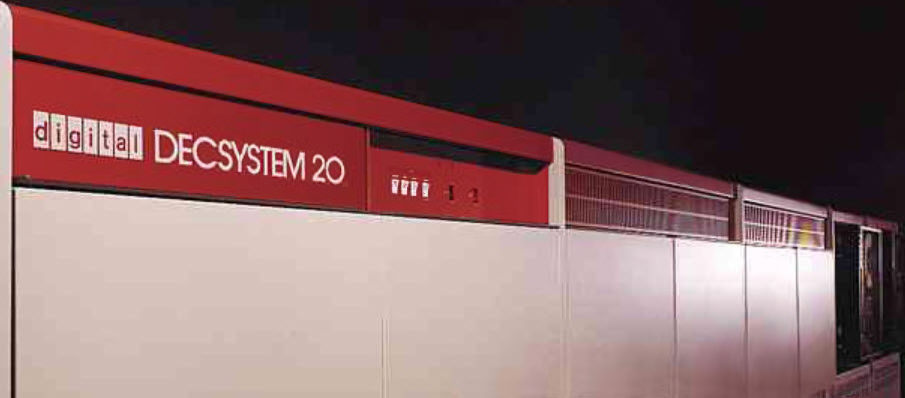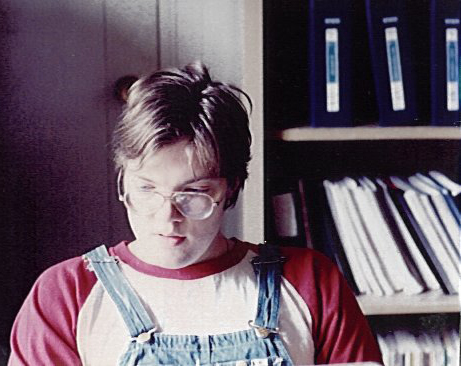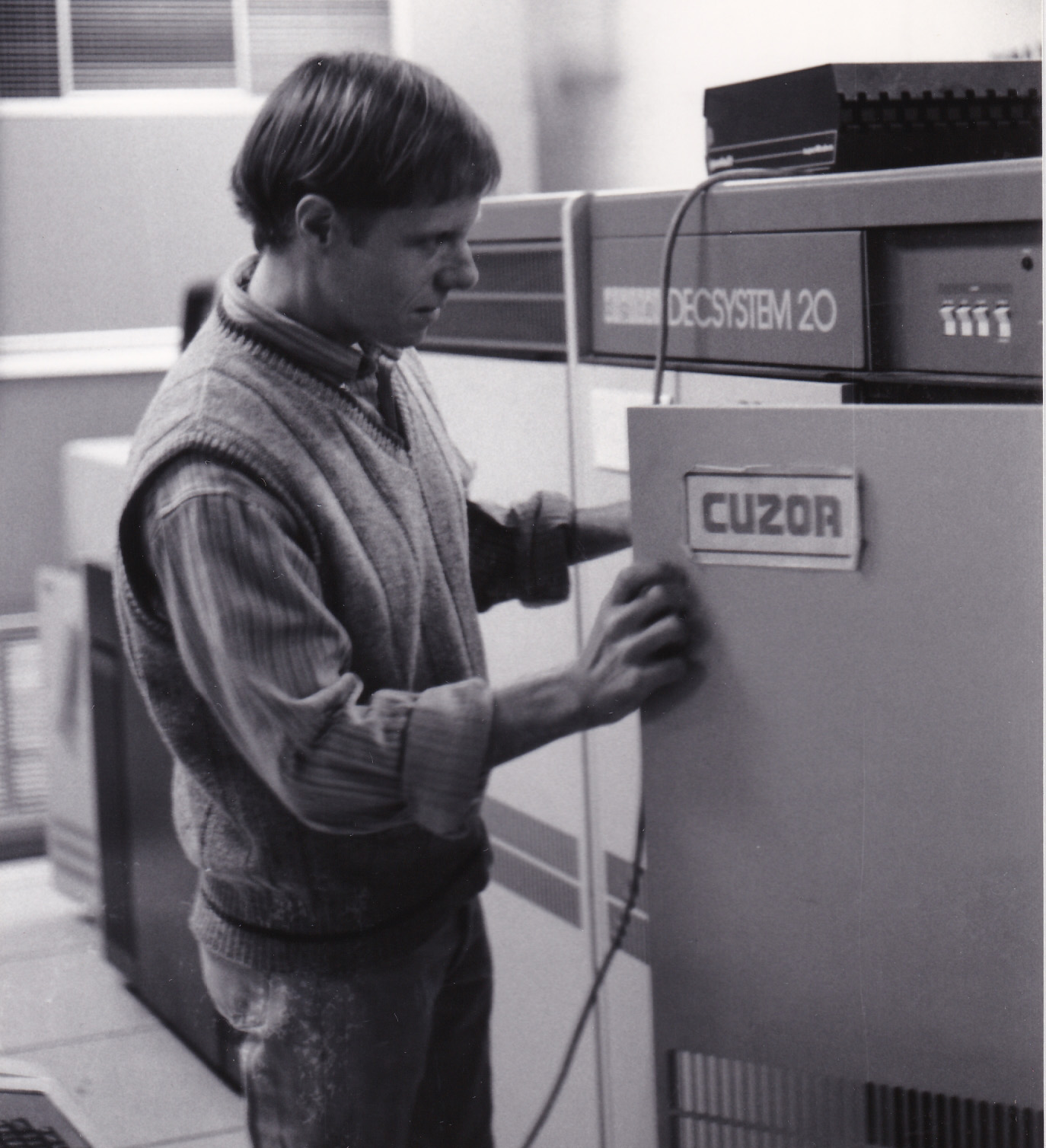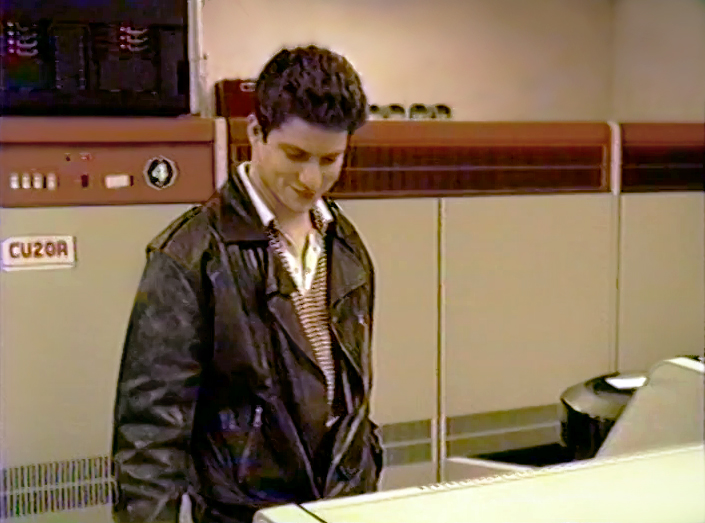|
The Kermit Project
|
Now hosted by
Panix.com
New York City USA
•
kermit@kermitproject.org
…since
1981
|

Frank da Cruz
The Kermit Project, Bronx NY.
Most recent update: Mon Sep 9 11:39:53 2024 New York time
Flip to Kermit-10
| V 5.3(277) | V 5.3(255) | V 5.3(248) | V 5.3(235) | V 5.3(230) | Older |


|
| Bill Catchings in 1984 |

|
| Me with DEC-20, 1980s |
In case you're curious about Kermit-20's version number, it's in DEC-20 versioning notation: MAJOR.MINOR(EDIT)‑WHO.
[256] /PARITY switch to ECHO for batch and other testing purposes
[257] Teach INPUT to respect parity, if asked
[258] SET PARITY action /ABORT, /PROCEED
[259] Fix a few arcane bugs in the C constant expression expander
[260] Fix DEFINE to work (again) with ESCAPE and PARITY
[261] Decrease repeated parity error messing
[262] Remove the legacy INPUT code that uses BIN%'s
[263] Stop using a SIN% for a line at a time read
[264] Toggle session logging from command level
[265] Fix TTY Input Buffer full when doing a TRANSMIT on a PTY
[266] Turn TRANSMIT and CAPTURE increasingly hairy switches in SET parameters
[267] Give effective data rate at end of TRANSMIT
[268] CAPTURE is no longer hidden. Further document it
[269] Review, update and correction of all help text
[270] Enhance default for SET PROMPT to give some extra useful information
[271] Fix TVT setting; it gets overwritten by automatic processing
[272] SET TRANSMIT DEFAULT-PROMPT
[273] SET TRANSMIT CASE OBSERVE/IGNORE
[274] Fix SET INPUT to better support DEFINE
[275] SET TRANSMIT SETTINGS-DEFAULTS for backwards compatibility
[276] Fix indirect recursion crash when reporting an error with REALLY short packets
[277] Variable blips (so we don't get clobbered for very small packets)
Kermit-20-Testing-Battery-5.3(277)-5 Updates
Updated Help
Current documentation includes greater detail on the edits listed above.
The source code and documentation are available in two archive formats, both compressed with gzip:
| Unix tar archive | k20mit-277.tar.gz | 25881083 bytes | Listing | |
| Tap archive of DEC-20 Dumper tape | k20mit-277.tap.gz | 15837891 bytes | Listing | |
Furthermore the uncompressed individual source and documentation files are available in the following directories:
| Source code | 20 files (.mac, .ctl, .log) |
| Documentation | 10 files (testing battery, announcement, 1988 user guide, 1985 Kermit book) |
| Data | 26 files of different types used by the test suite |
| Testing | Test suite and logs |
[249] Implement relative directory connect
[251] Emit new directory name when either wildcarded structure or directory change
[252] Fix some of the directory parsing logic to properly handle .CMDEV and .CMDIR
[253] Fix ^A to print the number of pages sent and the total; was always omitting total
[254] Implement CDUP, generic 'G'
[255] Make CWD accept ".." as token for Unix, DOS, Windows, and OS/2 CDUP
Current documentation includes greater detail on the edits listed above.
The source code is available in two archive formats, both compressed with gzip:
| Unix tar archive | k20mit-255.tar.gz | 13063956 bytes | Listing | |
| Tap archive of Dumper tape | k20mit-255.tap.gz | 10202169 bytes | Listing | |
Furthermore the uncompressed individual source and documentation files are available in the following directories:
| Source code | 20 files (.mac, .ctl, .log) |
| Documentation | 10 files (testing battery, announcement, 1988 user guide, 1985 Kermit book) |
| Data | 26 files of different types used by the test suite |
| Testing | Test suite and logs |
[236] Implement /FORKLESS connections for DECnet NRT’s
[237] Implement the RETURN keyword to stop processing a TAKE file
[238] Enhanced NRT disconnect messages
[239] Use .HPTOD (High Precision Time of Day) if the monitor has it HPTIM% .HPTOD
[240] When logging to a disk file, display the number of bytes written
[241] Handle potential case of incorrect data being sent for CWD
[242] ECHO /TRANSACTION /DEBUG /SESSION Switches
[243] Fix off by one error which appended NUL characters in packets
[244] Fix server FINISH does not close all logs
[245] Rewrite MOVSTU to use EXTEND instead of loop
[246] Additional C escape sequences: \O and \U
[247] Rewrite IAC handling to use EXTEND instead of loop
[248] Fix incorrect string lengths being returned by C constant expansion
Kermit-20-Testing-Battery-5.3(248)-5 Updates and new Batch Tests:
The source code is available in two archive formats, both compressed with gzip:
| Unix tar archive | k20mit-248.tar.gz | 13063956 bytes | Listing | |
| Tap archive of Dumper tape | k20mit-248.tap.gz | 10202169 bytes | Listing | Log |
Furthermore the uncompressed individual source and documentation files are available in the following directories:
| Source code | 20 files (.mac, .ctl, .log) |
| Documentation | 10 files (testing battery, announcement, 1988 user guide, 1985 Kermit book) |
| Data | 26 files of different types used by the test suite |
| Testing | Test suite and logs |
The source code is available in two archive formats, both compressed with gzip:
| Unix tar archive | kermit20.tar.gz | 13063956 bytes | Listing | |
| Tap archive of Dumper tape | kermit20.tap.gz | 10202169 bytes | Listing | |
Furthermore the uncompressed individual source and documentation files are available in the following directories:
| Source code | 20 files (.mac, .ctl, .log) |
| Documentation | 10 files (testing battery, announcement, 1988 user guide, 1985 Kermit book) |
| Data | 26 files of different types used by the test suite |
| Testing | Test suite and logs |

|
| Tom DeBellis with DEC-20, 1986 |
Version 5.3 is the first major release of Kermit-20 in nearly two decades and represents approximately a year of development for the following functionality:A large amount of restructuring has been done with an eye towards future development, instrumentation, debugging and overall robustness.
- Adaptation to version 7 of Tops-20.
- Adds DECnet NRT transport for connections to Tops-10, Tops-20 and Ultrix hosts.
- Adds pseudoterminal support.
- Support for batch stream execution, including extensive testing.
- Microsecond timing (limited by Tops-20)
- Efficiency Enhancements
- Symbolic (C) escape sequences and enhanced parsing
- New and enhanced commands
- Revamped and enhanced macro facility
Here's the full announcement:
| Rich text (PDF) | announcement.pdf | 43 pages |
| Plain text (ASCII) | announcement.txt | 2400 lines |
The source code is available in two archive formats, both compressed with gzip:
| Unix tar archive | kermit20.tar.gz | 13063956 bytes | Listing | |
| Tap archive of Dumper tape | kermit20.tap.gz | 10202169 bytes | Listing | |
Furthermore the uncompressed individual source and documentation files are available in the following directories:
| Source code | 20 files (.mac, .ctl, .log) |
| Documentation | 10 files (testing battery, announcement, 1988 user guide, 1985 Kermit book) |
| Data | 26 files of different types used by the test suite |
| Testing | Test suite and logs |
Kermit-20 5.1(186) is the last single-source-file release; it is archived at Columbia University. Since all DEC-20s come with the MACRO-20 assembler, it is distributed in source-code form. Here are the files you need:
| Kermit-20 5.1(182) | 2003-08-04 |
| Kermit-20 5.1(180) | 2001-08-06 |
| Kermit-20 5.1(179) | 2001-01-29 |
| Kermit-20 4.2(178) | 1988-08-16 |
| Kermit-20 3.0(30) | 1983-06-23 |
| cmd.mac | 1981-06-10 |
| DECSYSTEM-20 Kermit / kermit@kermitproject.org / 1981-2023 |